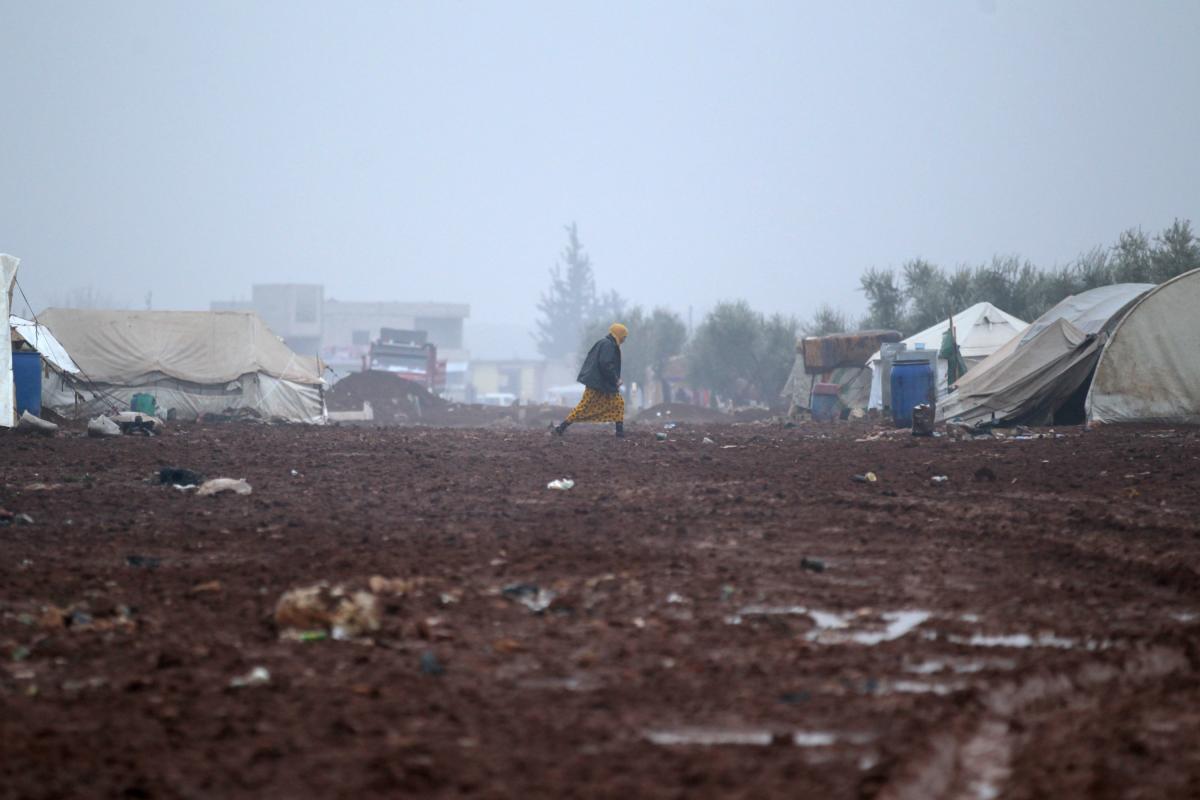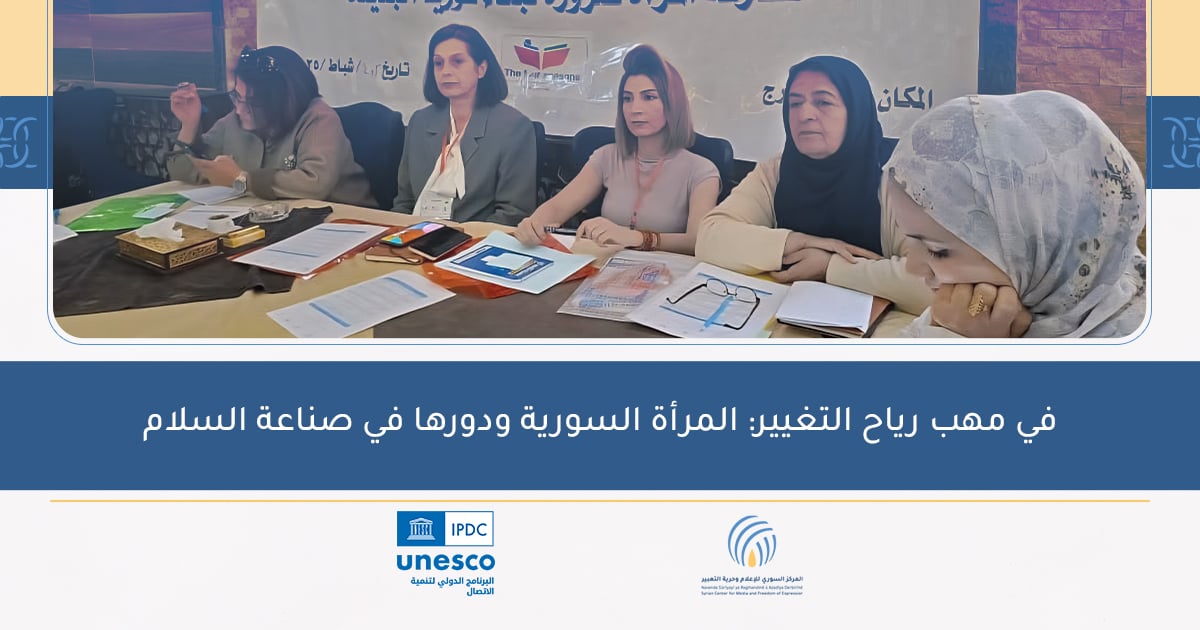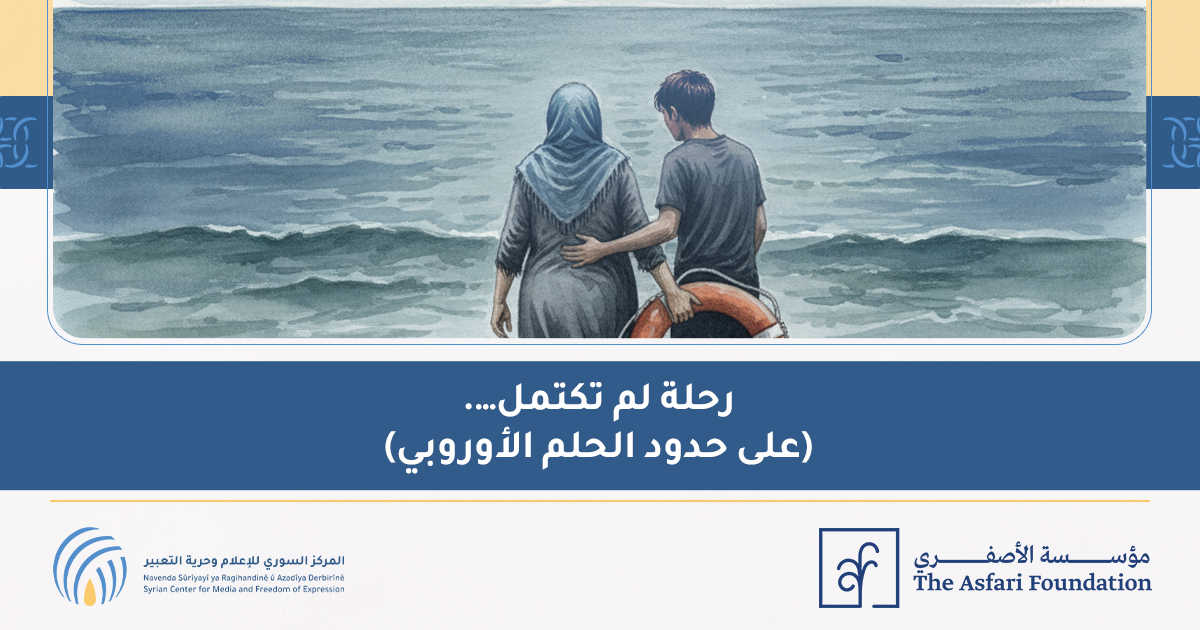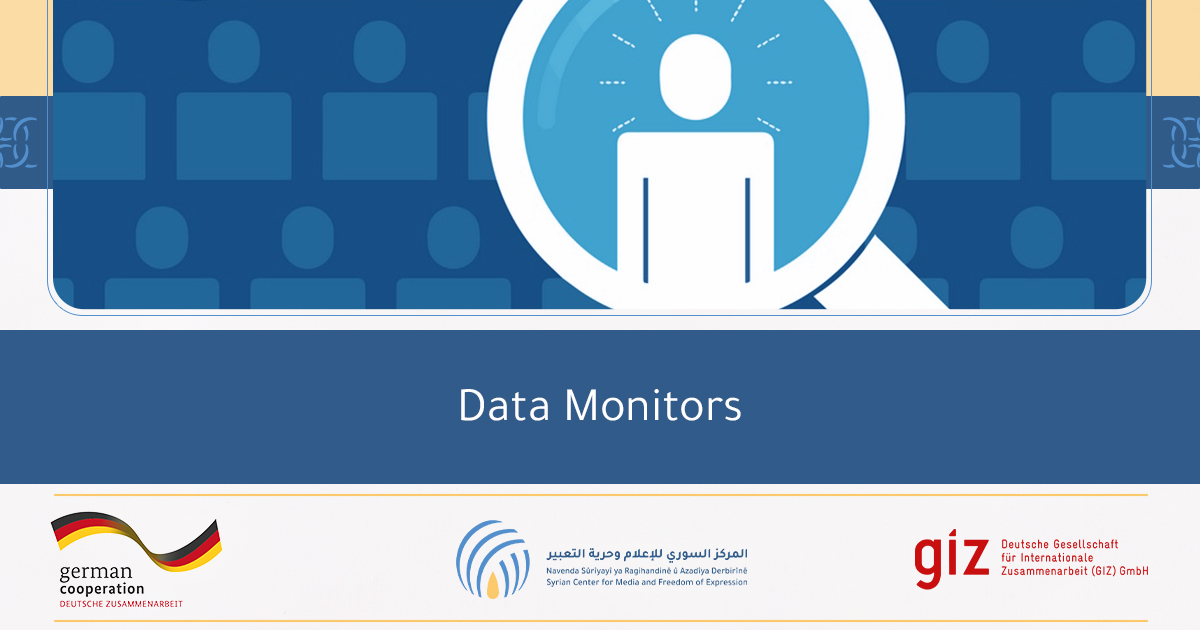
Recent statements by leaders and governments in the United States, Turkey,Lebanon, Saudi Arabia, Qatar, and Jordanindicate an interest in creating so-called safe zones in Syria. While no detailed plans for creating and managing such zones have been put forward, officials have suggested that establishing areas in Syria along its border with Turkey, and possibly with Lebanon and Jordan, would allow civilians fleeing conflict to be safe from attacks and receive humanitarian assistance while limiting the need for cross-border displacements and facilitating refugee returns.
But the calls for safe zones raise concernsabout placing displaced people in Syria in unsafe conditions and limiting their ability to flee to other countries. Discussed below are factors that governments should consider before establishing any safe zone or safe area, whether by the parties to the conflict or the United Nations Security Council.
- What are “safe zones” and “safe areas”?
- Have “safe zones” been safe?
- Why aren’t “safe zones” safe?
- Have there been effective “safe zones”?
- Can countries deny people refugee protection by returning them to “safe zones”?
- If parties agree to a safe zone, how can it be made safe?
1. What are “safe zones” and “safe areas”?
“Safe zones” or “safe areas” are areas designated by agreement of parties to an armed conflict in which military forces will not deploy or carry out attacks. Such areas have also been created by UN Security Council resolutions. They can include “no-fly” zones, in which some or all parties to the conflict are barred from conducting air operations. Such areas are intended to protect civilians fleeing from the hostilities and make it easier for them to access humanitarian aid. They may be defended by UN peacekeepers or other forces.
While the 1949 Geneva Conventions and their additional protocols do not specifically mention safe areas or safe zones, they recognize similar arrangements, notably “protected zones” and “demilitarized areas.” The latter are buildings or small areas where the parties to the conflict agree that civilians can get protections in addition to those already provided under international humanitarian law, or the laws of war. The Geneva Conventions also permit parties to a conflict to conclude “special agreements” to improve civilian protection.
The creation of safe zones has no bearing on the prohibition under international humanitarian law of attacks targeting civilians, whether those civilians are inside or outside the designated safe zone. That is, civilians outside safe zones remain protected from deliberate attacks.
2. Have “safe zones” been safe?
International experience has shown that “safe zones” and “safe areas” rarely remain safe. Such areas often pose significant dangers to the civilian population within them: If adequate safeguards are not in place, the promise of safety can be an illusion, and “safe areas” can come under deliberate attack. There may also be pressures on humanitarian agencies to cooperate with military forces that control access to safe zones in ways that compromise their humanitarian principles of neutrality, impartiality, and independence.
Parties establishing safe zones may intend to use them to prevent fleeing civilians from crossing borders, rather than to genuinely provide protection. Such zones have been used as a pretext for preventing asylum seekers from escaping to neighboring countries and as a rationale for returning refugees to the country they fled.
Additionally, the presence of military personnel – sometimes commingled with civilian populations and sometimes using the safe area to launch attacks – can make the location a military target, as opposed to a genuinely safe zone. Forces might also use the safe area to recruit fighters, including children.
Safe zones and areas also suffer from the same problems faced by camps for internally displaced persons. Residents may not be able to access work or their farms, for example, and so will be dependent on assistance for food, water, and other services, including health care. Women may face greater sexual violence due to overcrowding and tense social dynamics, and to having to venture outside for work, water, firewood, or other reasons. UN peacekeepers or others in control might not have the capabilities to enforce law and order.
In short, the historical record on safe zones protecting civilians is poor – from Srebrenica in Bosnia-Herzegovina, to Kibeho in Rwanda, to Mullaitivu in Sri Lanka.
Bosnia-Herzegovina
The failure of UN peacekeepers to protect the town of Srebrenica led to the single biggest atrocity of the 1992-1995 war in Bosnia-Herzegovina. The fall of Srebrenica and its environs to Bosnian Serb forces in early July 1995 showed the weakness of the international community’s professed commitment to safeguard regions it declared in 1993 to be “safe areas” under UN protection.
UN peacekeeping officials did not heed requests for support from their own forces stationed within the enclave in eastern Bosnia. This allowed Bosnian Serb forces to easily overrun it and – without interference from UN soldiers — carry out the premeditated mass execution of more than 7,000 men and boys. During the occupation of the “safe area,” Bosnian Serb forces carried out rape, sexual violence, and other abuses against women, children, and the elderly. The example of Srebrenica highlights the dangers of creating a “safe area” without making adequate provision for the safety of displaced persons and without adequate military capabilities to deter attacks.
Sri Lanka
During the final months of the 26-year civil war in Sri Lanka in early 2009, government forces repeatedly and indiscriminately shelled densely populated areas. As the area controlled by the Liberation Tigers of Tamil Eelam (LTTE) shrank, the government unilaterally declared “no-fire zones” or “safe zones” on three occasions, calling upon civilians to seek shelter there. The Sri Lankan air force dropped leaflets appealing to civilians to move into these areas as soon as possible, but government forces continued attacking these areas. And the LTTE prevented the civilians from fleeing to government-controlled areas, effectively using them as human shields.
Over several weeks, tens of thousands of Sri Lankan civilians died in the LTTE enclave, many in the safe zones, primarily from Sri Lankan army shelling. The army repeatedly rejected reports of civilian casualties and insisted that any civilian losses resulted from LTTE forces deploying within the safe zone.
Civilians in the safe zone also suffered from lack of food, water, shelter, and medicines. The government’s decision in September 2008 to order humanitarian agencies out of the LTTE-controlled area greatly exacerbated their plight. Ongoing fighting, lack of oversight, and the manipulation of aid delivery by government and LTTE forces contributed to the high civilian casualties.
3. Why aren’t “safe zones” safe?
Whatever the intentions behind creating them, “safe zones” frequently and perhaps inevitably create security problems that may be difficult or impossible to overcome. Safe zones lead large numbers of civilians, often of a particular ethnicity or religion, to congregate in a single place, making them a clear and exposed target for warring parties that may want to attack them. And any area that is off limits for attack will attract fighters, especially members of non-state armed groups, making them less safe. Safe zones by their nature are also rich sources for armed groups to grab aid and new recruits – putting civilians, including children, at additional risk. And the creation of safe zones may suggest that civilians not in safe zones somehow have fewer protections than those inside. This increases the risk of attack or denial of assistance to those outside the zone.
4. Have there been effective “safe zones”?
No safe zone has been deemed an unequivocal success, but the safe zone for displaced Kurds in Northern Iraq has garnered mixed reviews over the years.
Northern Iraq
Following Iraq’s defeat in the Gulf War in 1991, Kurds in northern Iraq staged an uprising that the central government brutally crushed. Approximately 450,000 Kurds attempted to flee to Turkey. Those who managed to reach Turkey were held in the mountainous border area or were pushed back into Iraq by Turkish soldiers, in violation of international refugee law.
In April 1991, stretching authorization under UN Security Council Resolution 688 that called for access for “international humanitarian organizations to all those in need of assistance in all parts of Iraq,” the US, United Kingdom, France, and other allies established “Operation Provide Comfort” in the predominantly Kurdish area of northern Iraq to provide food, shelter, and clothing to displaced Kurds. The US, UK, and France enforced a no-fly zone through military operations. While humanitarian conditions improved, the Iraqi government was hostile to the establishment of a “safe area,” contending that it was an infringement upon Iraq’s sovereignty, and deployed 200 armed police into the safe area in April 1991. In July, 500 UN observers arrived to monitor Iraqi compliance with Resolution 688. In October, Iraqi forces withdrew from the northern provinces.
In 1992, the Turkish government, claiming that Kurdistan Workers’ Party (PKK) rebels were hiding out in northern Iraq, sent in its army to attack them. In 1995, it sent an additional 35,000 troops into the “safe areas.” Despite its status as a no-fly zone, the Turkish air force was able to bomb PKK targets in the area. Repeated Turkish incursions and the internal fighting in the region threatened security and reduced relief work and village reconstruction.
By 1996, no significant international military presence remained in the northern areas, but the no-fly zone remained in place. Iraqi government forces entered the city of Erbil on August 31, 1996, arresting hundreds of people and summarily executing scores of others. Iraqi agents searched the offices of humanitarian organizations, looking for personnel files, confiscating computers, and interrogating and threatening staff. The situation became perilous for many Kurds, largely employees of US aid agencies and their families, so the US government evacuated 6,500 people.
Despite these significant failings, including Turkey’s violation of the right to seek asylum, observers variously cited “Operation Provide Comfort” as the “most effective” or “the least bad of several bad” alternatives considered by the international community to protect displaced Iraqis prevented from entering Turkey.
5. Can countries deny people refugee protection by returning them to “safe zones”?
People fleeing armed conflict and persecution should never be prevented or dissuaded from seeking international refugee protection. Governments, in turn, cannot justify keeping their borders closed to refugees on the grounds that internal “safe areas” have been set up across the border. Countries have obligations under international refugee law to keep their borders open to people coming directly from places where their lives or freedom are threatened and to “always admit [asylum seekers] at least on a temporary basis and provide them with protection. . . without any discrimination,” while other governments are obliged to “take all necessary measures” to assist such host countries. Any government that forcibly returns refugees who have entered its territory or rejects asylum seekers at its borders to a situation that puts their lives or freedom at risk violates its obligations under international refugee law.
It is critical for neighboring countries to open their borders to refugees. Other governments should meet the funding appeals of international agencies to ensure that neighboring countries have the resources to cope with any refugee influx and should maintain safe and legal pathways to resettlement for the most vulnerable refugees. If the international community directly or indirectly supports the closure of borders and the establishment of “safe areas” or other in-country camps as an alternative to open borders, it will send a dangerous message to countries elsewhere in the world facing large-scale refugee arrivals.
6. If parties agree to a safe zone, how can it be made safe?
The history of safe zones suggests that they are never genuinely safe. Even when they provide civilians a greater measure of safety, it comes at a cost. It can become easier to block aid deliveries, people feeling compelled to seek asylum are less likely to be able to cross an international border, and civilians not in safe zones may find themselves at greater risk. However, if a safe zone is agreed to, the following issues should be considered and addressed to reduce the risks:
- The “safe zone” must be sufficiently protected. Simply creating a “demilitarized” zone is not enough. Barring all peacekeeping or military forces is inadequate and dangerous in situations of open hostilities. No-fly zones by themselves – without forces on the ground – are also inadequate to protect a safe area. Any agreement to establish a safe zone would need to make sure there are adequate numbers of effective peacekeepers with robust rules of engagement for aggressively protecting civilians in the safe zone. They will also need to be able to help protect civilians trying to reach the safe area, and to enter or leave it. Peacekeepers deployed need to be professional forces appropriately armed and equipped to deter potential attacks. The countries providing forces must be willing to commit their forces over a substantial period and be willing to accept the possibility of casualties. These forces must strictly abide by international humanitarian law and human rights law.
- Ensure that warring parties are on notice that the creation of a safe zone does not leave civilians outside of the zone subject to attack. Civilians outside established safe zones remain civilians, and attacks targeting them are prohibited.
- Optimize the size and composition of the safe zone. Will the commingling of different ethnic or religious groups, including from opposing sides in the conflict, make the zone less likely to be attacked or will it create dangerous internal security problems? Would several smaller safe zones be easier to protect than a single larger one? Should peacekeepers be deployed primarily outside the perimeter or inside the zone?
- Ensure that the safe zone does not violate the right to freedom of movement. A safe zone cannot be used to violate people’s rights to seek asylum from persecution outside their country or to prevent civilians fleeing conflict zones. How is entry to and exit from the zone regulated? What are the contingency plans if freedom of movement either into or out of the safe zone is hindered or if residents of the safe zone face forced relocation?
- Ensure that there is effective and impartial law and order in the safe area. Make sure the various actors work closely with intergovernmental agencies and nongovernmental organizations, as well as representatives of the affected population, including women. Adopt established measures used in any area for displaced persons to provide for the internal safety and security of the population. For instance, create community networks to protect women and girls from sexual violence.
- Institute clear arrangements to ensure there is full and unhindered humanitarian access for intergovernmental agencies and nongovernmental organizations to provide assistance to people in the safe zone. The warring parties should be prepared to give advance consent for this access. Aid deliveries need to be monitored to prohibit unwarranted delays and a mechanism established to quickly resolve them. Where a safe zone is created by the UN Security Council without government consent, authorization under Chapter VII of the UN Charter should be given to ensure unimpeded humanitarian aid delivery.




